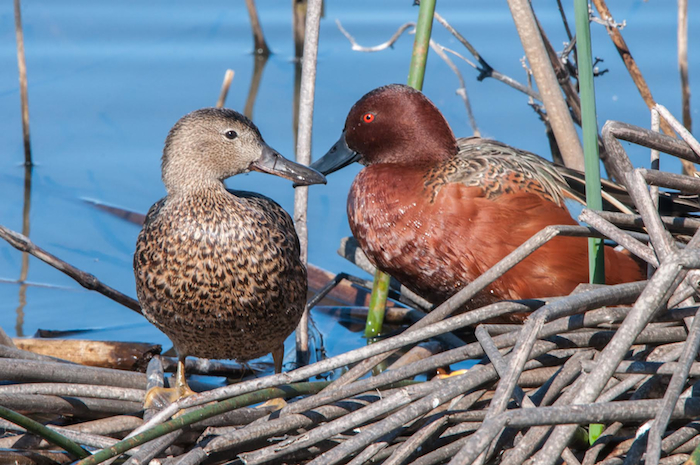
Seasonal colors, check! Pumpkin spices, check! Plentiful food and gathering with family? Check and check! Cinnamon teals are birds of the season! Turkeys notwithstanding.
Their color is brilliant autumn rust, a very red cinnamon.
The spice, of course, is in their name.
Feasting? That’s what the season is for: they dine and rest in preparation for raising young next spring.
And gathering with family? Cinnamon teals often feed together in tight groups, but they are not so numerous that they cover lakes the way some ducks and geese do. Fortunately, they seem to have an inclusive attitude, and readily paddle among other ducks on the ponds– adding spice to the mix, one might say.
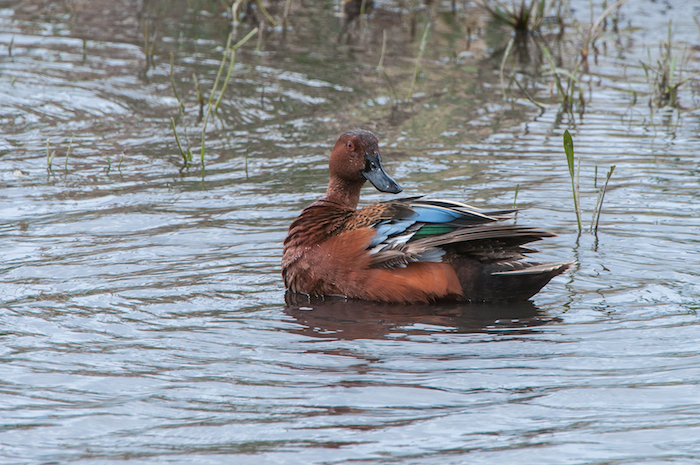
Cinnamon Teal Drake
Teals are small dabbling ducks. The dabblers are ducks who feed not by diving but by skimming aquatic plants and insects from the surface or tipping tail-up to stretch below water to gather snails from the bottom of their shallow ponds. Cinnamon teal, with relatively large bills perfect for filtering surface water, often skim the top of a pond near the cattails and tules that ring it.
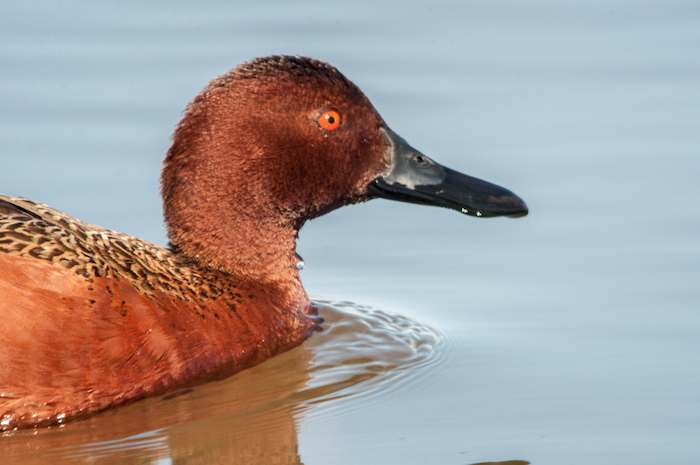
Along those tules a male may establish a favored resting spot, perhaps in the morning sun. There his fiery eye and brilliant rust-colored head and lower body can shine. If he stretches a wing he shows a green patch at the hind end of his upper wing, the teal color that defines this group. Forward of that color patch, known as a speculum, he shows an even larger strip of powdery blue feathers. But he does not always shine so brightly.
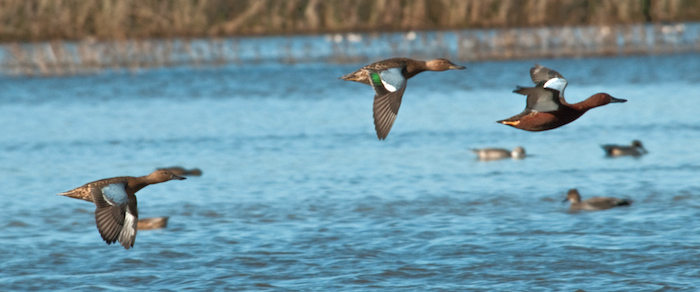
Ducks are heavy birds, and their aerodynamics require them to fly fast or not at all. That requires all their feathers to be in good form. Most birds molt, or replace their feathers, piecemeal, but ducks doing so would be flight-compromised for a long time. Instead they lose all their large feathers at once, becoming completely flightless for a much shorter period. Male ducks typically enter this phase after their young have hatched. They lose their bright colors and their flight feathers. Brown camouflage feathers grow in, and they retire from public life for a couple months. By mid to late fall they will grow colorful new feathers, including flight feathers
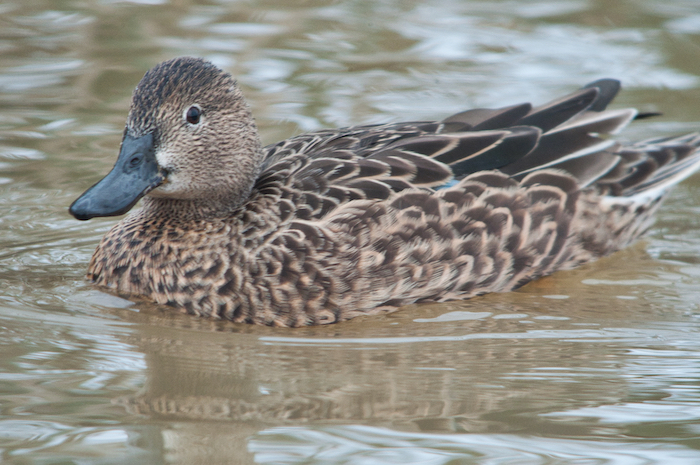
Cinnamon Teal Female
The timing works well. The females have raised their ducklings, and the young have fledged and flown. She is ready to start looking for a mate for next year just as he is freshly dressed to impress. She will study the males as they preen and strut for her attention, and make her selection. The pair will bond over the winter.
The female runs nesting. She builds her nest in dead pond-side vegetation, often under overhanging reeds that require her to tunnel into the den. There she will incubate 4-16 eggs, sometimes including eggs donated by a female from another species. When the young hatch in about three weeks she will guide them for a couple months, until they take wing to spread their own spice.

No comments yet.